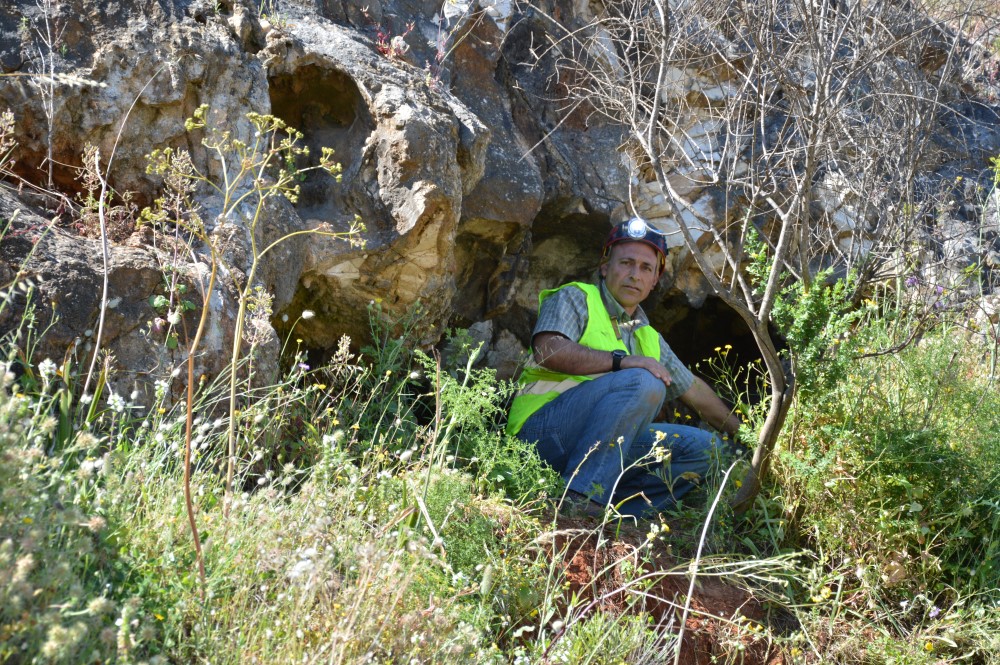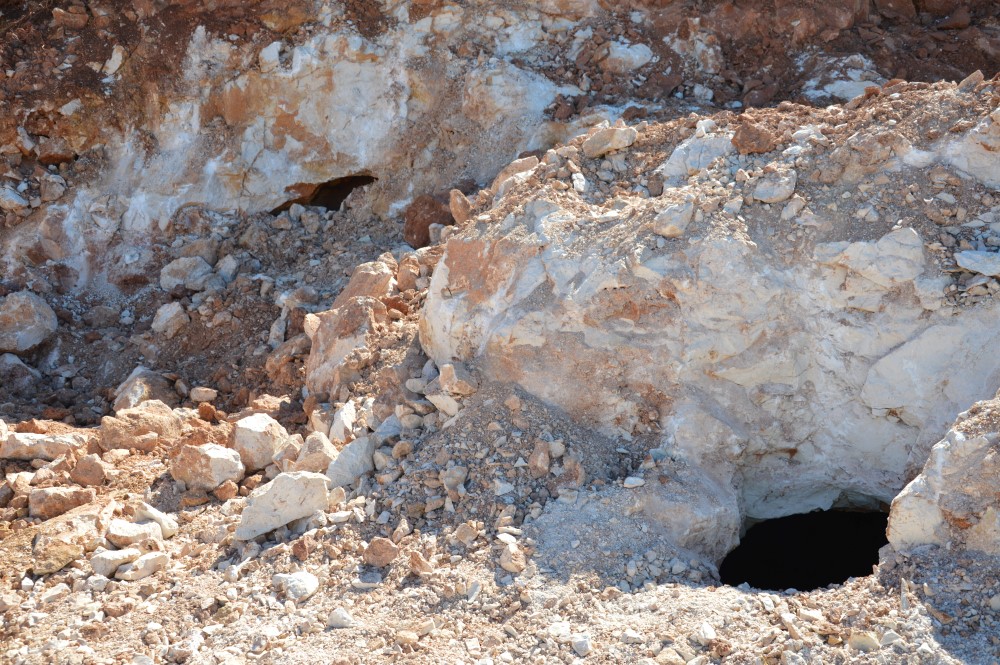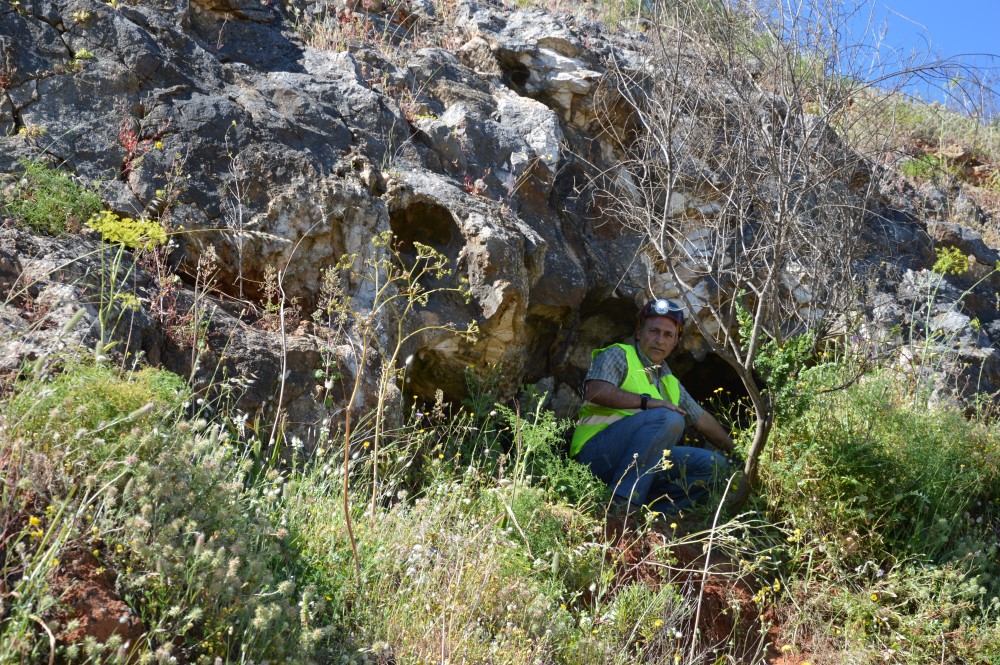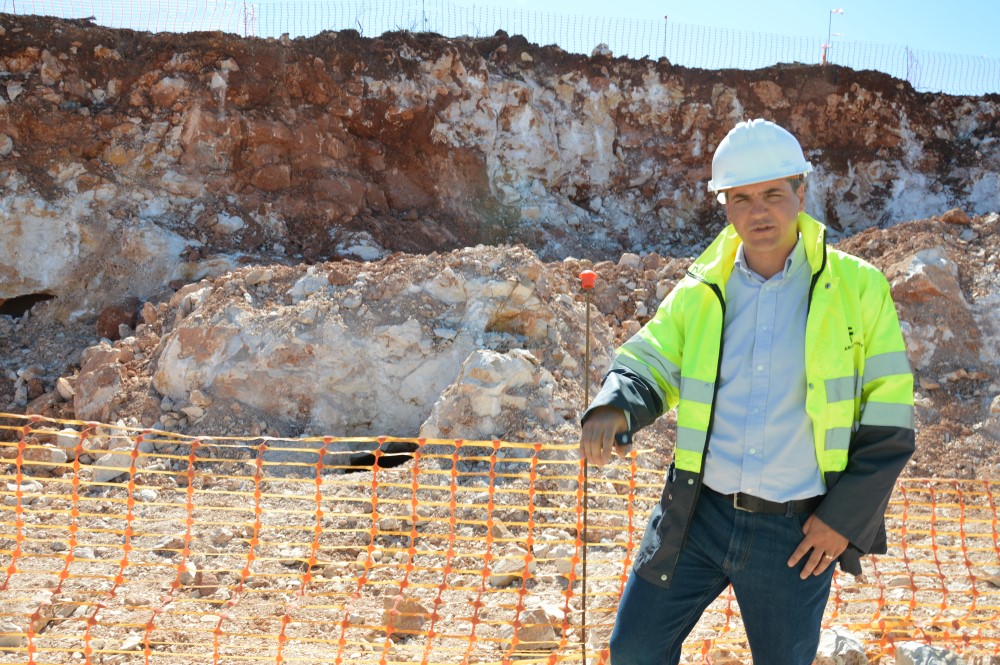 The cave next to the Boina stream and the EN125, in the Companheira area (Portimão), where about a month ago archeological surveys discovered traces of occupation by Neanderthal Man, with 50 to 60 thousand years, will now have a gate, which only allows entry to investigators.
The cave next to the Boina stream and the EN125, in the Companheira area (Portimão), where about a month ago archeological surveys discovered traces of occupation by Neanderthal Man, with 50 to 60 thousand years, will now have a gate, which only allows entry to investigators.
It's just that, although the traces are only Made up of chipped stone instruments and remains of animal bones, visible only to the trained eyes of archaeologists, the cave is very accessible, as the entrance is located on the slope of the EN125, and, with all the publicity that has been given to the case, it is feared that there may be unwanted visitors who, even unintentionally, destroy the fragile remains of our remote ancestors.
The most curious thing is that, although the cave is located 30 meters from the perimeter of the work of the new WWTP of Companheira and 45 meters from the place where the construction works will actually take place, the owner of the project, Águas do Algarve, is the one who will pay the gate, in conjunction with the Regional Directorate of Culture of the Algarve.
Nuno Bicho, the professor and archaeologist at the University of Algarve who coordinates the ongoing drilling work and discovered the carved stone tools the fashion of the Neanderthal, stressed, on a visit to the site with journalists, last Monday, that «the gate is placed and paid for by Águas do Algarve, for a civic taste, in order to guarantee the protection of the archaeological heritage». The cave is “completely outside the perimeter of the work, so Águas do Algarve did not have any responsibility, but wanted to go beyond what was legally their obligation”. The company, stresses the researcher, "has been absolutely exemplary in this case."

However, in the land where the work is taking place, other cavities in the limestone rock, typical of a karst zone, have also been found. However, so far, and as checked the Sul Informação at the site, it's just 'empty', hollow spaces open in the limestone, with no access to the outside, resulting from geological phenomena and the action of water.
All these spaces, namely in the area where the huge settling tanks for the future WWTP will be built, as soon as they are found, have been the subject of scrutiny. But that's right, just "empty".
On the ground, but in an area that will not be affected by the construction of any structure, an algar was also found, a natural cavity opened in the limestone rock by the action of chemical erosion caused by water, such as those found on the Algarve coast.
This algar, detected during the second phase of the assessment of the archaeological potential of the land and after clearing, is now covered with earth and will be subject to archaeological excavations and more detailed assessment, as guaranteed in the visit to the site by Tiago Fraga , archaeologist responsible for Archeofactory, the company hired by the contractor to carry out the obligatory archeological monitoring.

The intervention in the algar, which is still being 'validated', that is, authorized by the Directorate-General for Cultural Heritage, should start within a month and involves using mechanical means to remove the earth that is covering it and then «go down there».
To complement this work, "survey studies of the massif using geo-electric profiles" will now be carried out within the perimeter of the work, explained Teresa Fernandes, spokeswoman for Águas do Algarve, who also accompanied the journalists' visit. With this survey, archaeologist Tiago Fraga guarantees that “more conclusive information will be obtained”.
However, despite all the precautions required by the potential presence of archaeological heritage of great importance, the works of the Companheira's new and much-desired WWTP continue at a normal pace, proving that it is possible to reconcile heritage protection and construction.
«The work is oriented so that there are no delays, for the areas where it is known that there are no traces. The machines are working in areas where it is known that there is nothing”, said archaeologist Tiago Fraga.
A cave hidden before the eyes of all

But the most important place is really the grotto, whose entrance can be glimpsed halfway down the slope of the EN125, where traffic passes swiftly and continuously.
Nuno Bicho, an archaeologist from UAlg, nimbly climbs up to the cave's entrance, just to show where it is, half covered by a bush. The cave, which was already known to some of the most curious people in the Portimão area, became more or less visible when, in the 90s of the last century, the new Arade bridge and the bypass on the EN125 to Portimão were built. But it had never been properly identified, much less investigated.
«The chamber, which is about five meters by five and a height that can go two or three meters to places where we have to crawl, is about four meters from the top of the hill and the current entrance is about two or three meters from the top," the archaeologist told the Sul Informação, who visited him this week in the laboratory of his ICarEHB - Interdisciplinary Center for Archeology and Evolution of Human Behavior, located on the University of Algarve's Gambelas Campus, in Faro.
“But the original entry wouldn't be too far from what it is today,” he adds.
From the first survey carried out on a square measuring one meter in the interior of the cave, by Nuno Bicho, by other members of his team, and also by the archaeologist Frederico Tatá Regala, from the Regional Directorate of Culture of the Algarve, a box full of spoils was removed. . They are «tools in chipped stone, typical of the Middle Paleolithic period, when the Neanderthal lived, and some remains of bones, of fauna, probably correspond to the animals that were hunted and eaten by our ancestors, rabbit, deer, aurochs [a ancestor of the current oxen]».
Everything is now properly packaged and labeled in small plastic bags with tags.
 The archaeologist spreads the contents of one of the bags on the table and explains: "these are the diagnostic pieces", that is, the objects carved in stone (the cut marks are visible on the small lithic instruments) that allow us to understand, by the technique used, what human epoch they refer to. And how is this evaluated? «It has to do with the morphology of the piece, how it was prepared to be extracted», adds Nuno Bicho.
The archaeologist spreads the contents of one of the bags on the table and explains: "these are the diagnostic pieces", that is, the objects carved in stone (the cut marks are visible on the small lithic instruments) that allow us to understand, by the technique used, what human epoch they refer to. And how is this evaluated? «It has to do with the morphology of the piece, how it was prepared to be extracted», adds Nuno Bicho.
In addition to animal bones, such as a huge horse's tooth, there are several stone tools, which were used "for scraping or hunting", for example. These are, says the researcher, «Levallois splinters», the technique identified as having been used 50 or 60 thousand years ago by the Neanderthals and therefore pieces that allowed the identification and first dating of the Companheira's cave.
But some of the collected materials will also be sent for dating at the Max Planck Institute in Leipzig, Germany.
The tools made of chipped stone have a very rudimentary appearance, made of a material that was not flint, «maybe it is greywacke». Very simple lithic instruments, but they can tell very old stories, of our disappeared ancestors, of which we, men and women today, have 2 to 5% of DNA in our genes.
And what will follow now? Also within the scope of the protocol between the Regional Directorate of Culture and UAlg, which has to do with the project led by Frederico Tata Regala, to assess and recognize the archaeological potential of the karst system in the region, «let's finish the survey we started and then let's stop,” says Nuno Bicho. "We're really going – or we'll try to go – to the base rock, to get an idea of the cave's full potential."
Then the cave will be closed with the gate and “my team and I will place a special request for a research project not only for this cave, but also for Ibn Ammar's. The idea is to do specific work on the caves that exist here in the Arade valley».
This research project will have two parallel paths – one passes through funding and scientific recognition through the Science and Technology Foundation (FCT), «within the scope of the competition that we hope will open this year».

The other will be to submit to the DGPC, next year, a PIPA (Multi-Annual Research Project), to start the research work from 2017.
The research project will aim to determine the relationship between the caves of Ibn Ammar, on the other side of the Arade valley, and this one. “For a certain period, our Neanderthal ancestors lived in this valley and used its resources. From a scientific point of view, the idea is not just to excavate an archaeological site, but to understand the framework and ecology of a particular human group that lived 50, 60 thousand years ago».
Nuno Bicho is enthusiastic and believes that the potential of this Companheira cave could be a source of study and research for many years to come. “In Vale de Boi [Vila do Bispo municipality], we started in 2000, we only stopped a year, 16 years of work have already gone by”, he exemplifies.
«The distance from which the cave is is half an hour's walk from here [from Gambelas]. That will be closed with the gate when we are not there, which guarantees the safety of the site. Then it's a cave, sheltered from the sun, rain, wind, heat and cold. We can dig there every week there, throughout the year. We can include UAlg students in the excavation and go there two days a week throughout the year, which will make our work much easier», explains the archaeologist.
In the laboratory there will also be a lot of work to be done, namely to identify the bones of animals and other traces.
While he is putting the materials already collected in the grotto back in the bags, Nuno Bicho stops and takes a closer look at a small bone, which in the reporter's untrained eyes seems to be a tooth.
Wouldn't it be great to find Neanderthal Man bones? Nuno Bicho is cautious: «In Portugal, with the exception of Lagar Velho, which is a unique burial in the world, there are no traces of human bones in the Paleolithic. There are in two or three caves in the Portuguese Extremadura only one or two teeth or a Neanderthal phalanx. The chances of finding Neanderthal bones are very low, let alone an entire skeleton. But there is always hope»… We will see what results from the investigations that will follow in the coming years.
Photos: Elisabete Rodrigues|Sul Informação

























Comments